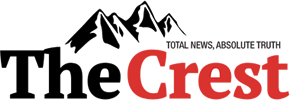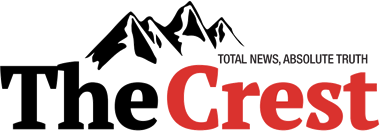Big InterviewNews
Adesina’s Bombshell: I don’t believe in youth empowerment

In this interview with some Nigeria journalists on the sidelines of the just-ended World Bank/International Monetary Fund Annual Meetings in Washington DC, the President of the African Development Bank, Dr Akinwumi Adesina, shares his vision for Africa, and some interventions by the bank to prepare the continent and its people for the digital future. Harrison Arubu was there for the News Agency of Nigeria. Excerpts:
By Harrison Arubu
On support by the Africa Development Bank to women
We are supporting women. I think when Africa gets the issue of women right, it will get everything right. And so there is the issue of access of women to financing that we provide through Affirmative Finance Action for Women in Africa (AFAWA). This will help to mobilise $3 billion for businesses for women on the continent.
The other one is that we actually supported another fund which is called the Alethia Identity Fund, which has just closed at $75 million and that is to support growth capital for the businesses for women. So in other words, the small, medium and the large businesses for women are what we are supporting. Finally, I will like to see financial institutions in Africa being held fully accountable when it comes to financing women.
And so the bank will be launching what we call the Women Financing Index for Africa in which all financial institutions in Africa will be rated based on their lending to women. So, both in terms of the volume of lending, in terms of the terms of lending and in terms of the development impact of their lending for women. So, those who lend more to women will get more resources from us at a discounted rate from us, so you can lend more and have more impact for women.
So, we are focused massively on how we can drive investments for women. That’s a big issue for us, just to give you an update on that. We raised $251 million from the G7 leaders when I was in Biarritz with President Macron. It was great.
Can you elaborate on the Green Capital thing that the Africa Development Bank launched recently? What is it about?
Let me just say more generally as a bigger issue, when it comes to driving green growth on the continent. I believe that achieving green growth on the continent is not an externally imposed issue, it is in Africa’s interest to actually have green growth, to have clean air, clean water and to grow in an environment where people have good quality of life.
And so, you can have GDP growth but if you are having GDP growth in which it’s occurring huge amount of emissions, pollution of water, of air, it’s not improving the life of anybody. So, anybody telling me in any part of the world that my GDP is growing, that is not my concern. My question is: is at what cost? What does it mean for the lives of people?
So, for us at the Bank we are very big on renewable energy. Today, we have doubled climate finance as an institution from $12 billion to $25 billion by 2025. Secondly, about 50 per cent of our climate financing is on climate adaptation. Because, you see a lot of draught, you see a lot of floods, you see all of these extreme weather patterns that are happening. So, we are actually doing a lot of that to support countries to adopt to climate change.
The other thing of course is that we have just launched an initiative which is called Desert to Power, meant to provide universal access to electricity all across the 11 countries in the Sahelean Zone of West and Central Africa.
The Sahelean Zone has the least access to electricity, but it also has the highest problems in terms of migration towards Europe. It also has the highest problem in terms of insecurity and fragility, and the highest challenge in terms of fertility rate. If you look at the birth rate in Niger, for example, that has almost 0.8 percent of rural access rate for electricity, the fertility rate is 7.2 per woman, which is one of the highest in the world. So, there is a direct correlation or association between not having electricity and rising fertility rate.

(Cuts in) So, they thrive in darkness.
Yes, they get busy with other things.
(General laughter)
It has its own consequences.
What we have done is that we are leading this effort that will provide electricity for 250 million people across the 11 countries and 90 million of those will be through off-grid systems because of the sparse populations there. It is our biggest effort, and it’s going to be the world’s largest solar zone. We are not just talking about it.
We have started in Burkina Faso with a project called Yellen Rural Electrification Project which is a solar-based project we are doing with Agence Française de Développement (AFD), the French Agency for Development. We also have another one we’ve done in Chad that is called Djameya Solar Power Plant Project. We have in Mali and other places as well.
And of course this will include northern Nigeria because we are working on a 1,000 megawatts solar power project that is going to be in Jigawa. So we take the whole of the Sahelean part of that.
Just to conclude on that, we have launched something that’s called the Green Based Loan Facility, a $500 million facility that will allow us to support countries that want to move out of dependency on coal or other fossil based energy sources towards renewable energy, so that we are able to provide you financing at a cheaper cost to be able to make that transition.
What will be the criteria for eligibility for the Green Based Loan facility?
It is open for any country that wants to have access to it. It is that you must have a bankable project that can use it and you will meet all the conditions that the bank will normally require, but it is an open thing for any of the countries willing and interested in doing it, even the private sector by the way.
What is the total climate fund that AfDB has committed in Nigeria in recent times, say within the last three years?
The issue for us with climate finance is we build climate finance into our projects. For example, if you take the case I just mentioned to you now, we are supporting the development of a thousand megawatts of solar that is going to be in the Jigawa area, which is huge for us. We provided as well for the evacuation of power in Nigeria with the Transmission Company of Nigeria.
We provided them with $200 million that can support the evacuation of power and that is a big problem in Nigeria because of the liquidity crisis that is in the energy sector. We have also provided support to the Nigerian Bulk Electricity Trading (NBET) so it can meet some of its own payment requirements to those supplying them with gas.
The other thing that we are doing obviously that is linked to climate in Nigeria is in the north of Nigeria where we have put about $253 million into the north east area project, because a lot of the challenges we are facing are linked to climate: population growth, urbanisation, climate and environmental degradation. So, some of the challenges you find, the fragility you find in that part of the country comes from that. That’s why we built climate finance into our financing in the sector.





